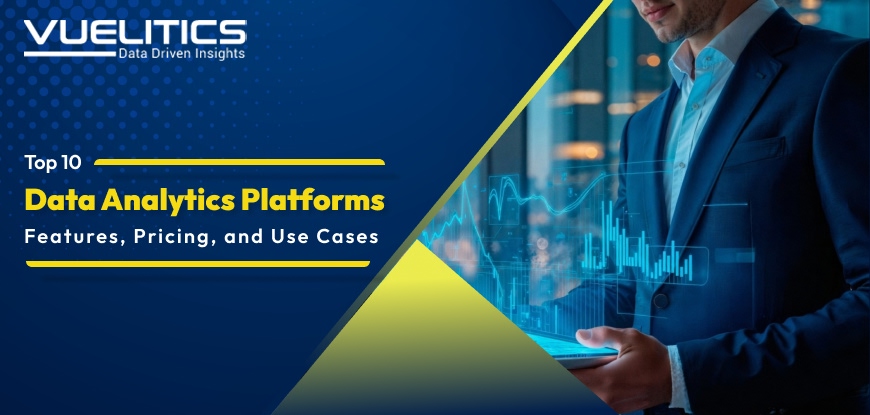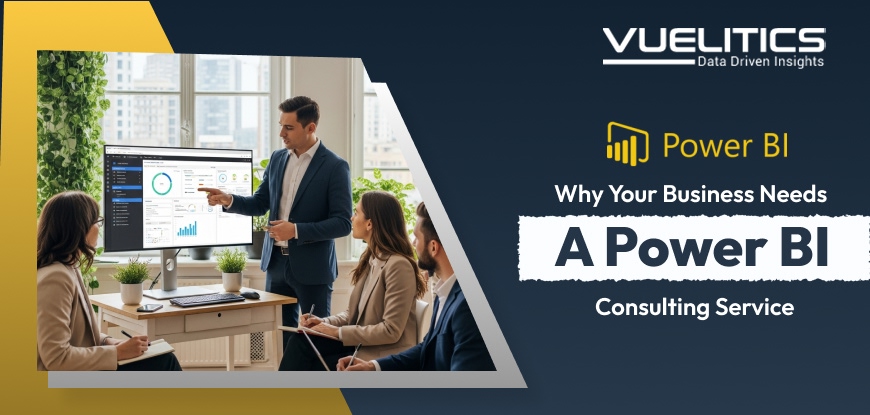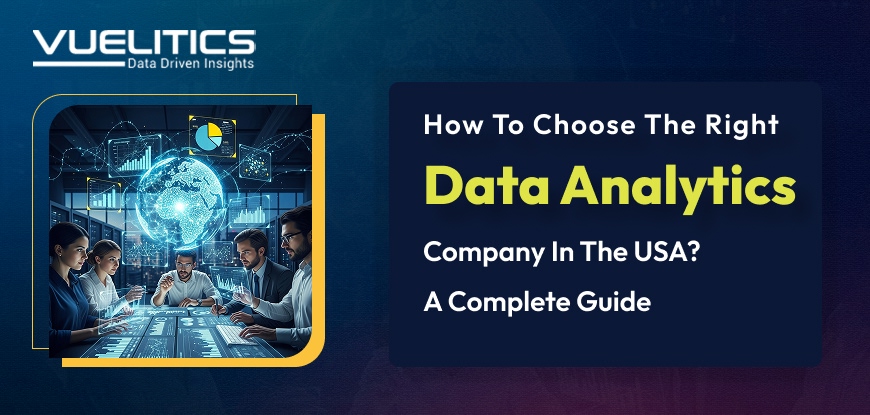- Home
- Blogs

Top 10 Data Analytics Platforms In 2025: Features, Pricing, And Use Cases
The corporate sector is witnessing a shift where data analytics is considered the new backbone of value creation. Firms that can effectively analyze data can predict trends, enhance customer experiences, and make more intelligent strategic decisions. That’s why data analytics platforms have been a game changer for the modern business.
There are many data analytics tools out there in 2025, how do you know which to use? Some are looking at cloud-native scale, some at AI-driven insights, and some at visual storytelling. In this guide, we’ve compiled the top 10 data analytics platforms of the year and offered commentary on their features, pricing and real-world analytics platform examples so that you can better identify which platform is best suited to your needs.
Top 10 Data Analytics Platforms
Microsoft Power BI (with Fabric)
Overview
For organizations that already depend on Microsoft 365 and Azure, Power BI has become the default BI tool. Now that Microsoft Fabric is running, it can be further added to the data product offering by virtue of Power BI’s role in data lakes and real-time analytics.
Key Features
- Strong modeling with DAX.
- AI-powered Copilot for generating reports and summaries.
- Seamless integration with Teams, Excel, and SharePoint.
Pricing
Each user pays $14/month for Power BI Pro and $24/user for Premium Per User.
Fabric capacity pricing varies depending on scale.
Use Case
A manufacturer that consolidates IoT sensor data from multiple plants in Power BI reports stored directly in Microsoft Teams is able to provide operations managers with a view of production in real time.
Tableau (Salesforce)
What it does: Leader in visual storytelling and interactive dashboards.
Standout features
Analysis oriented at Viz first, natural language questions, and community-driven extensions.
Pricing snapshot (2025)
- Creator: $75/user/month.
- Explorer: $42/user/month.
- Viewer: $15/user/month.
Best for:
Executive dashboards and storytelling.
Use case:
A network of hospitals generates interactive dashboards for ensuring quality of care.
Qlik Cloud Analytics
What it is: Out-of-the-box cloud-native BI with associative data exploration.
Standout features
- Associative engine for cross-table exploration.
- Built-in automation and governed apps.
Pricing snapshot (2025)
- Beginning at $200/month for 10 users, this plan increases in price as you move up the standard and premium tiers.
- Best for: Teams in need of an agile approach to ad hoc investigation.
Use case:
Telco A “chugs together” service ticket, telemetry and churn data—to learn more about regional outages.
Snowflake
Overview
Snowflake, the leading player among analytics tools from the 2010s, remains popular in 2025 because of its cloud-native architecture. It decouples compute from storage, enabling companies to scale resources independently without overspending.
Key Features
- Auto-scaling virtual warehouses.
- Secure data sharing and marketplace.
- Strong governance and compliance support.
Pricing
Snowflake uses a usage-based pricing model. Compute charges are accessed by the credit, usually $2 to $4 per credit per month, and storage costs are running at about $23 per terabyte of storage per month.
Business Use Case
One multinational retailer leverages Snowflake to bring together e-commerce data, inventory information and customer feedback in a single warehouse. It then directly shares vetted datasets with suppliers, helping to control latencies and to optimize supply chain planning.
Databricks Lakehouse
Overview
The Databricks Lakehouse combines data lakes and data warehouses on one platform. It is particularly strong for companies that want analytic capabilities as part of their AI/ML strategy.
Key Features
- Replicated, ACID compliant data storage with Delta Lake.
- Analytical and data science notebooks and SQL data warehouses.
- Unity Catalog for secure governance.
Pricing
Billed per second in Databricks Units (DBUs). Serverless SQL runs at around $0.70 per DBU in many regions.
Business Use Case
A financial services organization uses Databricks to create, automate, manage, and operationalize machine learning models to detect fraud for credit card transaction processing and retraining of AI models on the same platform in real time.
Google BigQuery + Looker
Overview
In the realm of serverless data warehousing, Google BigQuery remains at the top. By pairing it with Looker for business intelligence, it provides end-to-end solutions for analytics teams.
Key Features
100% serverless compute, with middleware-free, zero-infra management.
Pricing
Each terabyte of data scanned by an on-demand query costs roughly $6 – $10, with the first terabyte being free per month. Storage has different tiers depending on activity. Looker’s prices vary according to features and users.
Business Use Case
A gaming enterprise uses BigQuery to analyze trillions of daily in-game events. Using Looker, the team leverages dashboards to track churn, measure engagement and share insights across departments.
Amazon QuickSight
This service provides AWS-native business intelligence (BI) with SPICE in-memory acceleration and embedded analytics capabilities.
Standout features
- Pay-per-session for readers.
- Embedded dashboards and Amazon Q AI assistance are available.
Pricing snapshot (2025)
- Readers: around $3/user/month.
- Authors: $24–$50/user/month depending on edition.
Best for:
AWS-centric organizations and embedded analytics.
Use Case:
A SaaS vendor that offers customer dashboards as the client to the SaaS app, using low-cost per-session billing.
Oracle Analytics Cloud
What it is: Oracle’s enterprise analytics platform with extensive connections to ERP/HCM.
Standout features
- Augmented analytics and AI insights
- Tight connection with Oracle apps.
Pricing snapshot (2025)
- Professional: $16/user/month.
- Enterprise: $80/user/month.
Best for:
Oracle-heavy enterprises.
Use case:
Finance extracts actuals vs. forecast from ERP and creates narrative reports.
IBM Cognos Analytics
What it does: Enterprise BI: reporting, dashboards, and AI-powered data discovery.
Standout features
- Pixel-perfect reporting.
- AI assistant and governed modeling.
Pricing snapshot (2025)
- Standard: around $10/user/month.
- Premium: around $42/user/month.
Best for:
Regulated industries with an enterprise-level need for audit-ready reporting.
Use case Ideal for:
A financial institution, Produces: Compliant reports and dashboards.
ThoughtSpot
What it is: AI insights, a search-first analytics platform.
Standout features
- Natural-language querying.
- AI-driven recommendations and live boards.
Pricing snapshot (2025)
Pricing plans start at about $25/user/month; enterprise pricing is available upon request.
Best for:
Teams that prioritize search-first exploration
Use case:
A sales team queries pipeline data in natural language and uses live answers in meetings.
Choosing the Right Data Analytics Platforms
- Need scalability and sharing? Snowflake or BigQuery.
- AI and data science focus? Databricks.
- Microsoft environment? Power BI with Fabric.
- Visual storytelling? Tableau.
- Ad hoc exploration? Qlik.
- AWS-native teams? QuickSight.
- Oracle-driven companies? OAC.
- Governed reporting? Cognos.
- Search-first analytics? ThoughtSpot.
FAQs on Data Analytics Platforms
What is a data analytics platform?
This stack documents the tools used to gather data, run analyses, and generate dashboards, reports, and insights.
What is the cheapest analytics platform?
QuickSight and Power BI are very cost-effective choices for small and medium-sized businesses, and Snowflake and Databricks are optimized for large enterprises.
Do small businesses have the resources to deploy these tools effectively?
Yes, the likes of Power BI, QuickSight and Qlik also have scalable entry-level plans.
How do pricing models differ?
Some solutions (Snowflake, BigQuery, Databricks) have pay-per-use pricing, while others (Tableau, Power BI, ThoughtSpot) charge by user.
How will AI capabilities change analytics by 2025?
Today, assistants powered by AI can be designed to build dashboards, parse information for insights, and ask questions in natural language, opening up the universe of digital analytics and democratizing information—making it available to all employees in an organization, not just analysts and data scientists.
Conclusion
The right data analytics platform for your business will depend on business needs, team capabilities and your data strategy. Whether you want predictive analytics, financial reporting or embedded dashboards, the platforms we list here present compelling business use cases for analytics tools in 2025.
With the right solution, your data analytics company is able to convert raw data into usable information, enabling smarter, faster decisions. That decisions drive stronger, more profitable results.



Post Comments